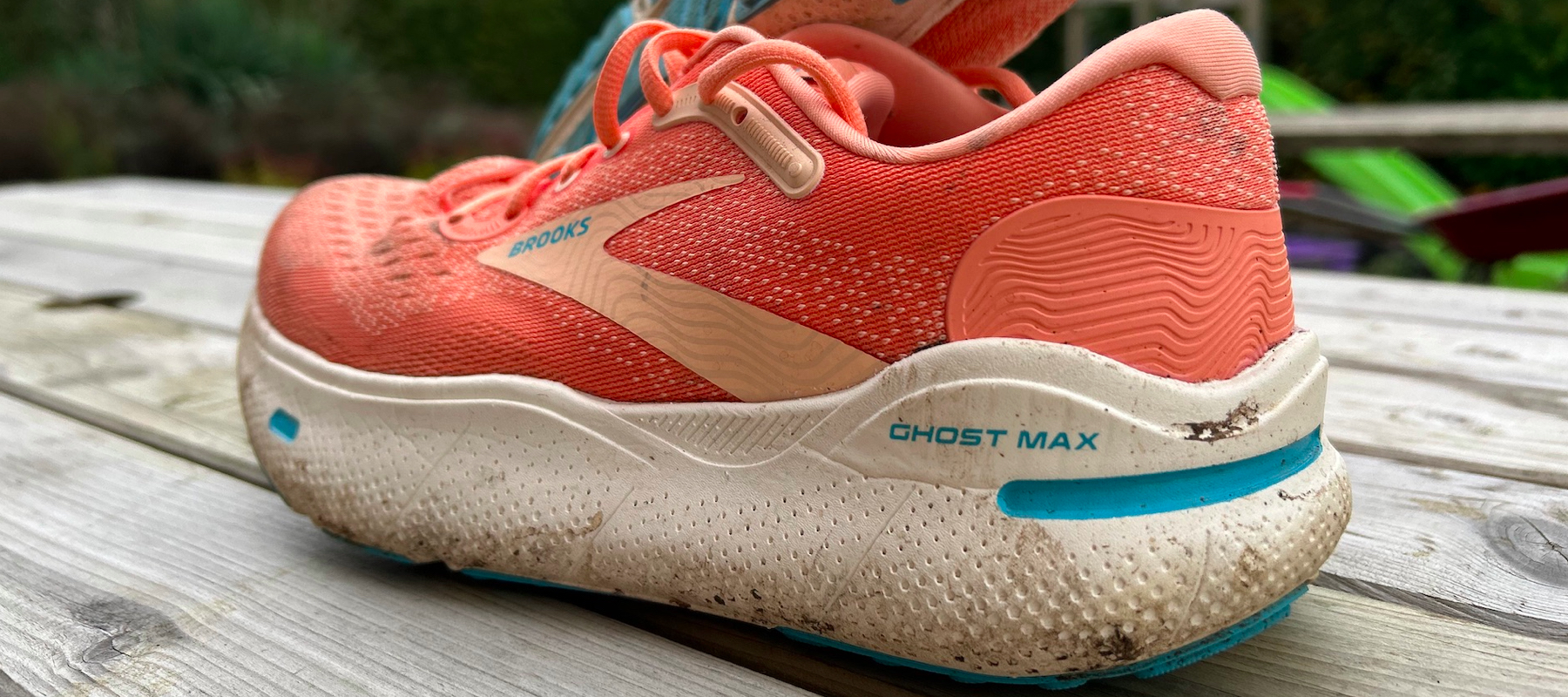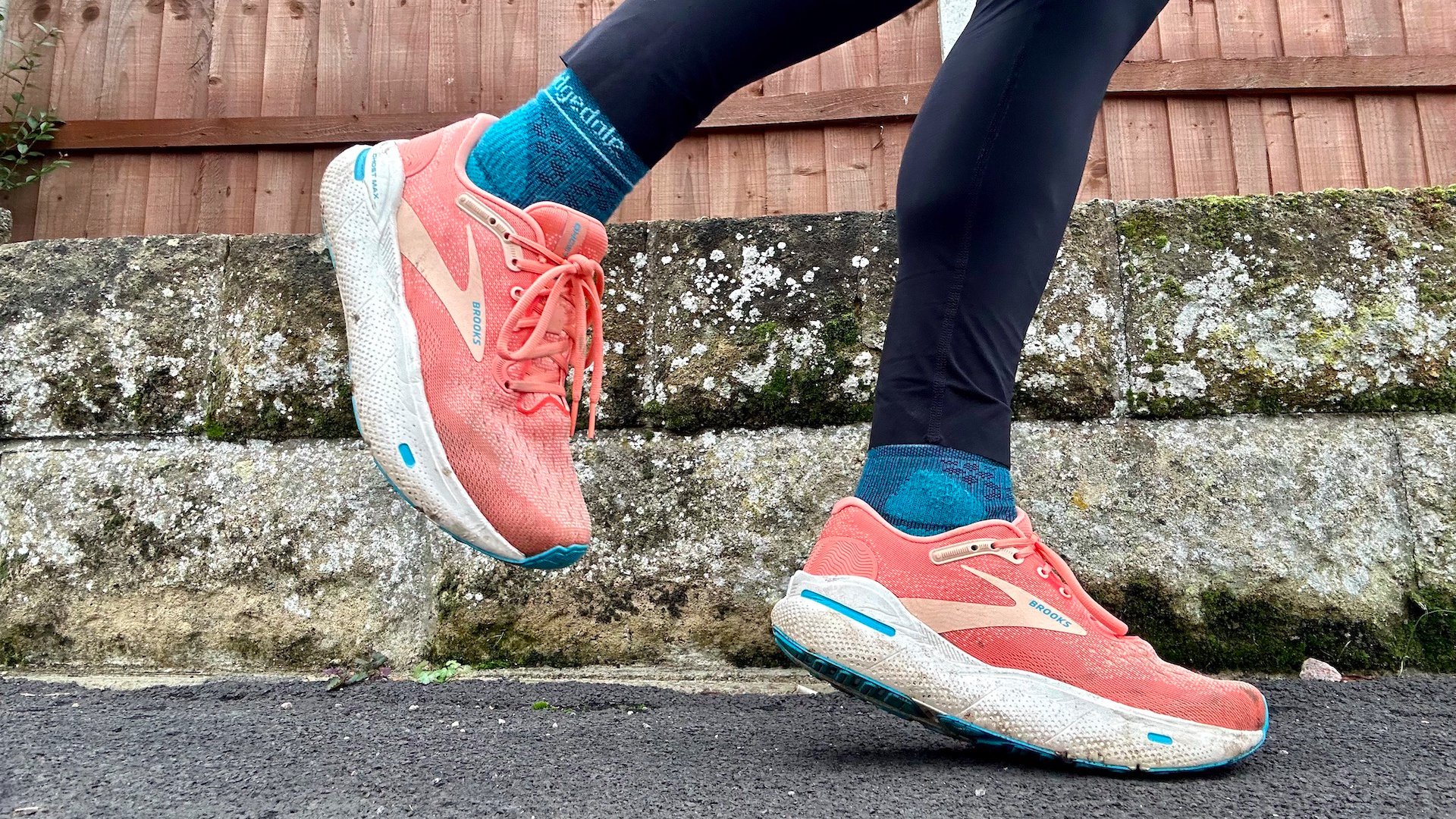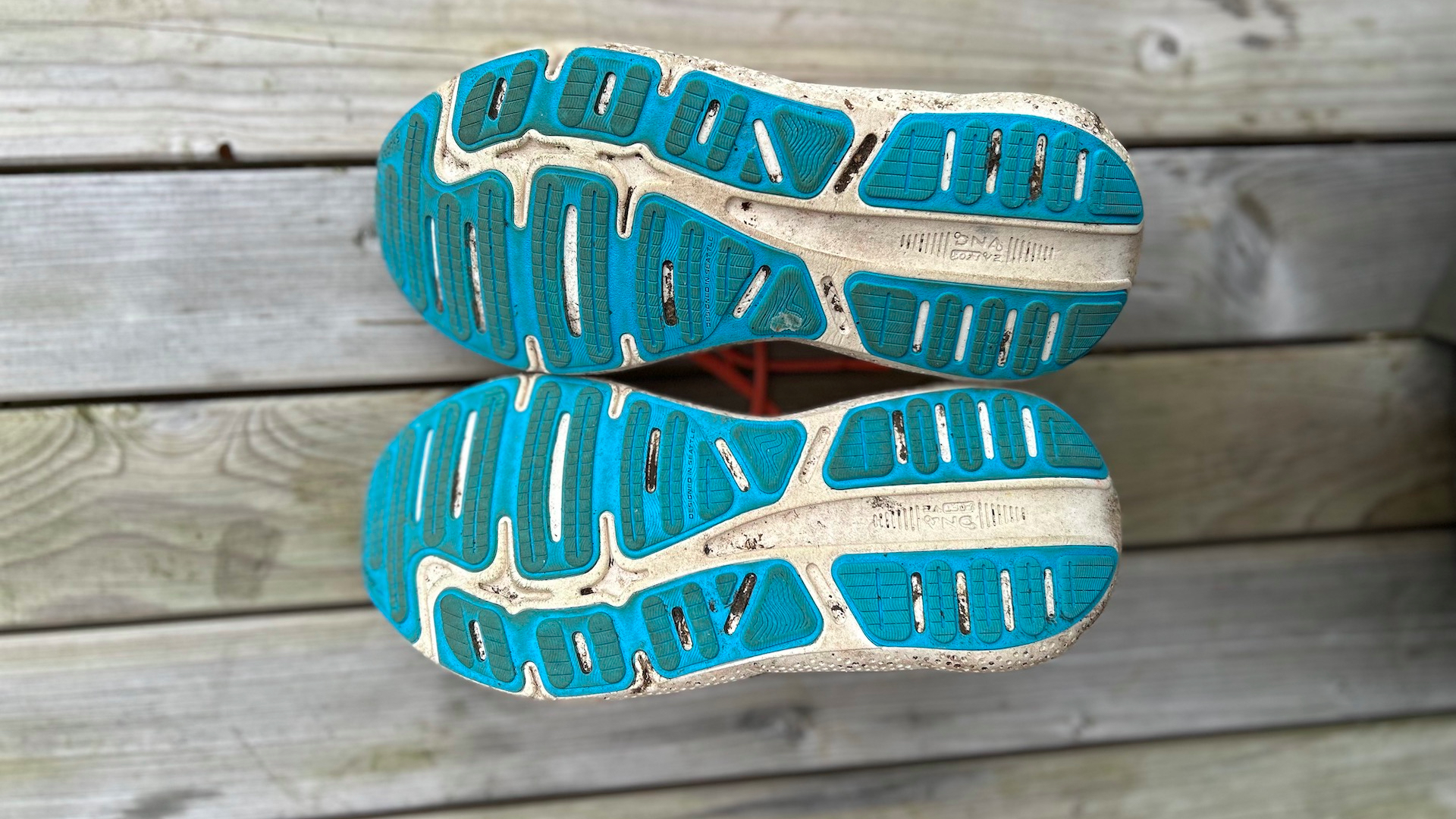
Meet the reviewer
Brooks Ghost Max: first impressions
The Brooks Ghost Max is the latest in the brand’s popular Ghost range and they provide maximum cushioning in a road running shoe. They promise stability, soft landings and a smooth ride from the DNA Loft v2 Foam and GlideRoll Rocker which Brooks say will also help reduce knee and ankle discomfort and the symptoms of plantar fasciitis, metatarsalgia and Morton’s neuroma – pretty exciting stuff.
• List price: $150 (US) / £150 (UK)
• Weight (pair UK 6): 510g / 18oz
• Colors: Men’s: Orange / White / Full-Black / Off-White / Black & Orange / Black & Green / Navy; Women’s: Peach / Blue / Black & White / Full-Black
• Drop: 6mm
• Compatibility: Long distances on wet and dry roads and gritty paths
We found the fit very secure and comfortable straight from the box, with a nice wide toe box. The bounciest high-cushioned shoes we’ve used before are Hokas, and in comparison to those we found the Ghost Max’s cushioning less bouncy, but not necessarily in a bad way – these felt more supportive and stable with a very appealing, firm, propulsive ride. This propulsion also comes from the rocker which tips you forward with each footstep as if to say, “I’ll make this run nice and easy for you.”
Brooks Ghost Max are fairly light, and the grip we found to be excellent, though not in terms of muddy off-road running. It’s designed as a road running shoe, and it handles slippery pavements of all types with ease, even in the rain; on flag stones, tarmac and natural stone, the Ghost Max was very impressive.

Brooks claim the Ghost range is now carbon neutral through buying carbon credits (not ideal but better than nothing depending on the credit bought), and the shoe is made from 56.4% recycled materials. However, there’s no mention of how eco-friendly the production methods are, which is much more significant.
Brooks Ghost Max: on the roads

The first long run I did in the Brooks Ghost Max was three hours long, around the rainy streets of Stamford, finding as many short, sharp hills and steps as I could in training for the Arc of Attrition 50 in January. I was immediately impressed by the comfort straight from the box, by the firm and propulsive ride, and by the tacky grip on the (often slippery) natural flagstones of the Stamford Donkey Steps on that dark, wet November evening.
I’m dubious about Brooks’ claims that the shoes help reduce the symptoms of so many running injuries listed, but have to admit that prior to wearing these I was experiencing a plantar fasciitis flare-up after a three-week break from training. This has now disappeared since testing these shoes on daily walks and runs in the last couple of weeks. Is this down to the shoes? Or a more gradual training buildup? Either way, these shoes do feel supremely comfy.

For road runners needing a high level of cushioning they’re a dream, and for trail or ultra runners who sometimes need to train on roads, do a recovery run on easy gritty paths and roads, or have a long road section in the middle of an otherwise traily race, these will be the perfect solution.
Eco-wise, using over half recycled materials sounds good, but more info is needed on the manufacturing methods as these create the most impact of a shoe upon the planet. In the same vein, being carbon neutral by buying carbon credits is not the same as reducing carbon output along the production chain. Brooks is not alone in this and at least they are trying – as with most other running shoes, our best option still is to wear them as long as possible and repair until unusable.








